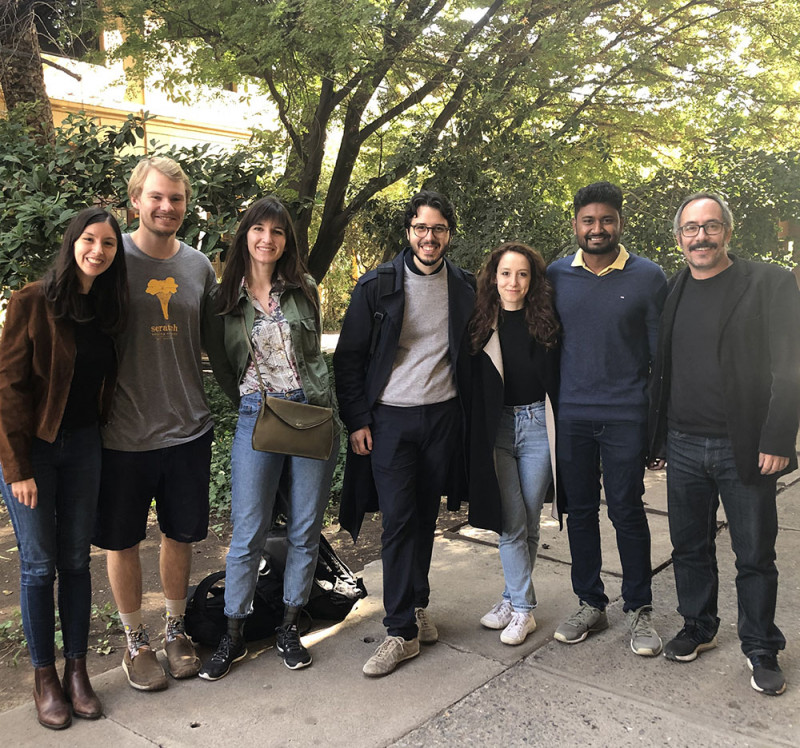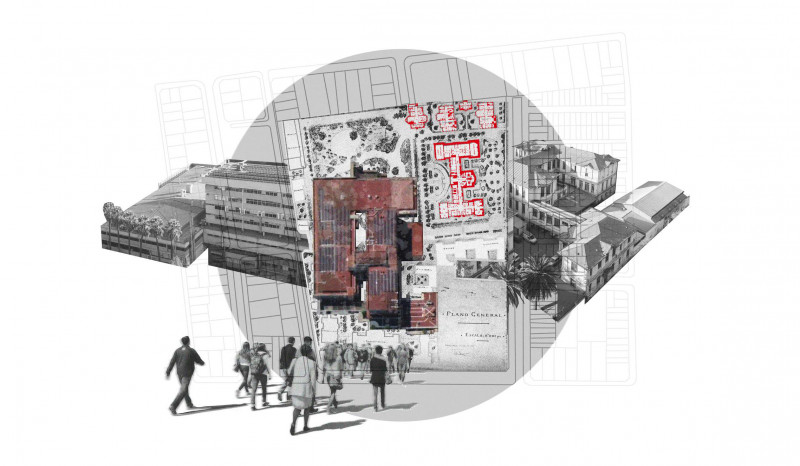
Apr 28, 2019
Group photo
??, Philip, Bojana, Domenico, Sara, Gowtham, Dino

Jan 10, 2019
- heritage | The San Borja Arriarán Hospital’s Block
Abandon is (Not) Always a Bad Word
Past, Present and Future of Large Infrastructure Pieces in the Matta Sur Neighborhood: The San Borja Arriarán Hospital’s Block
15,300 Households
60,000 Inhabitants
213 Hectares of Heritage protected land
0.91 Square meters/inhabitant of green spaces
1 Abandoned Hospital
One of the city’s most valuable and complex neighborhoods is located in the southern sector of the Santiago district: a low-rise working-class housing continuum—built in the second half of the nineteenth and early twentieth centuries—, which also had a series of facilities that, at the time and due to its uses, were situated outside the city: the jail, the asylum, the slaughterhouse, the arsenal, and the hospital.
Over the years, those uses have left the area (known as the Matta Sur neighborhood), leaving some of the most relevant architectural pieces, both in size and architectural quality, in a state of obsolescence and progressive deterioration.
Listed in 2016 as a National Monument, Matta Sur is the largest protected urban borough in the country. It is also, however, the area with the lowest access to public services and green spaces in central Santiago.
In the heart of the neighborhood, the remarkable buildings designed by the architect Emilio Jéquier for the San Borja Arriarán Hospital are today severely damaged as a result of the 2010 earthquake, concentrating its hospital function only in one modernist building completed in the 70s. Like in the case of other infrastructures, the hospital is looking to move to a new site, away from the area.
The workshop’s invitation is to reflect on the future of a heritage complex, highly damaged by earthquakes, prior to its complete obsolescence, in an urban context that, although high in architectural and urban qualities, lacks the minimum public facilities and spaces, taking charge of the tensions and contrasts of the contemporary city.




